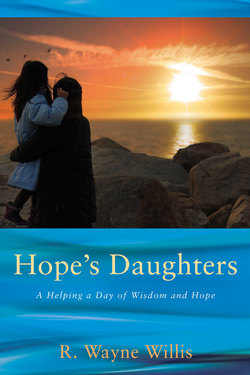Читать книгу Hope’s Daughters - R. Wayne Willis - Страница 47
На сайте Литреса книга снята с продажи.
February 7
ОглавлениеLast week I thought of Daniel Boone and Jeremiah Johnson. I also thought of George Washington’s shoeless army trudging through the snow at Valley Forge. “How,” I thought, “when they were so cold and so wet so much of the time, did they ever make it?”
I was roughing it, farm-sitting for my organic-farmer son and daughter-in-law while they were out of state at a sustainability conference. In the depths of January, in their tiny farmhouse with its wood-burning stove, composting toilet, and no television, a cold, steady rain beating down, I toughed it out. With unmitigated respect for their simple, no-frills, anti-materialistic lifestyle, this city slicker was missing the comforts of home.
Then I thought of Haiti. And I thought of our next-door neighbor who will live every day for the rest of her life wondering if and when her cancer will return. Suddenly I thought: “What a spoiled ingrate I am, with Haitians having gone from poor to destitute or from alive to dead, and my neighbor from healthy to full of cancer, and here I sit feeling deprived, and for only three days. How pathetic!”
Rabbi Arthur Waskow writes about the Jewish Feast of Sukkot (Tabernacles), when observant Jews build fragile huts (sukkah) with leaky roofs and live in them a week to remind themselves of the flimsy, temporary shelters their ancestors erected while wandering for forty years through the wilderness. Rabbi Waskow suggests than in our time, when we put our faith in steel-and-concrete structures like Pentagon buildings and World Trade Centers, Sukkot can remind us: “We are in truth all vulnerable. We all live in a sukkah. There are only wispy walls and leaky roofs between us.”32 And I would add, fault lines beneath us.
Earthquake, tornado, or flood victims could have the effect of making us more grateful for the common treasures we take for granted, like clean water, food, or a roof.
